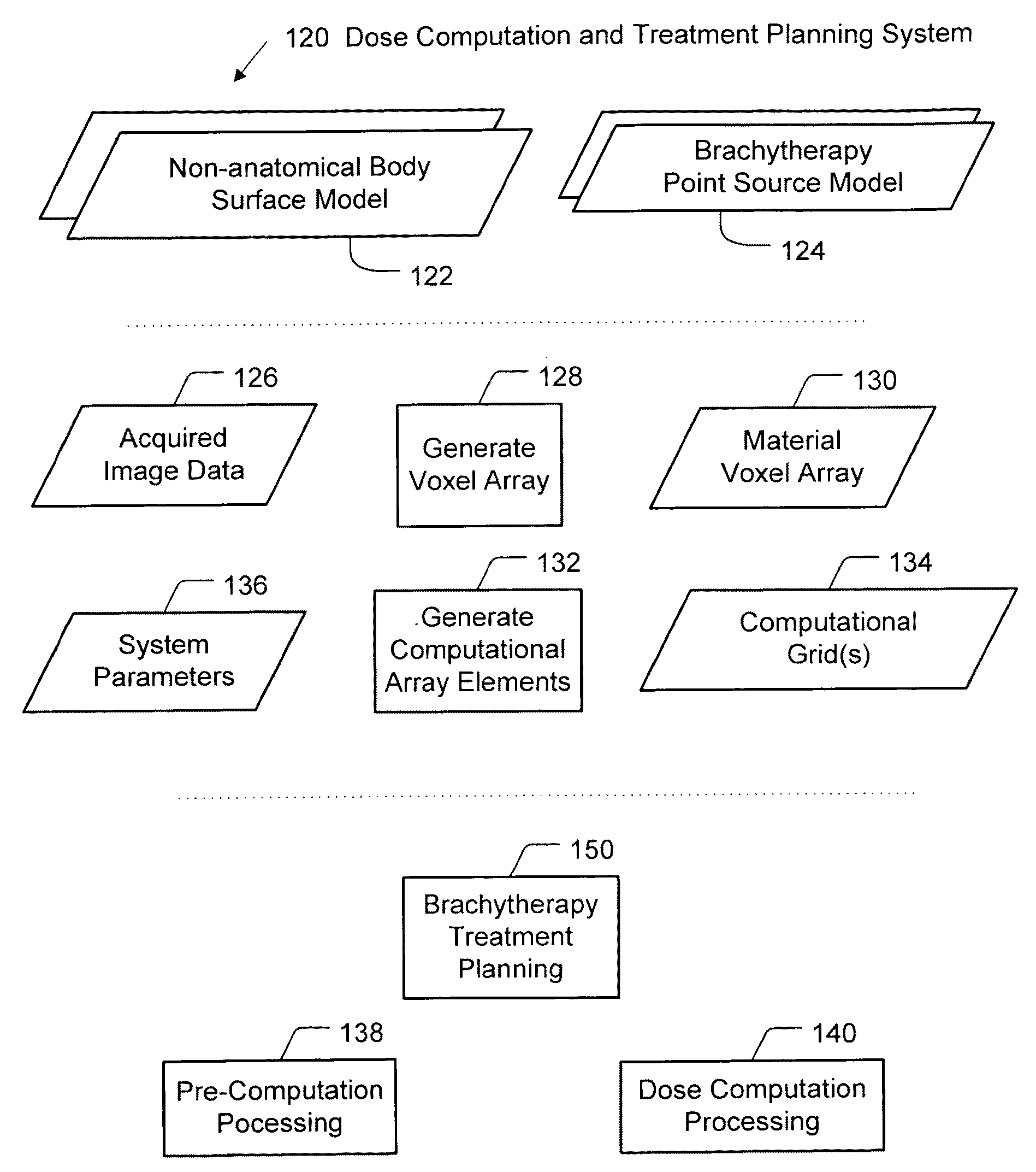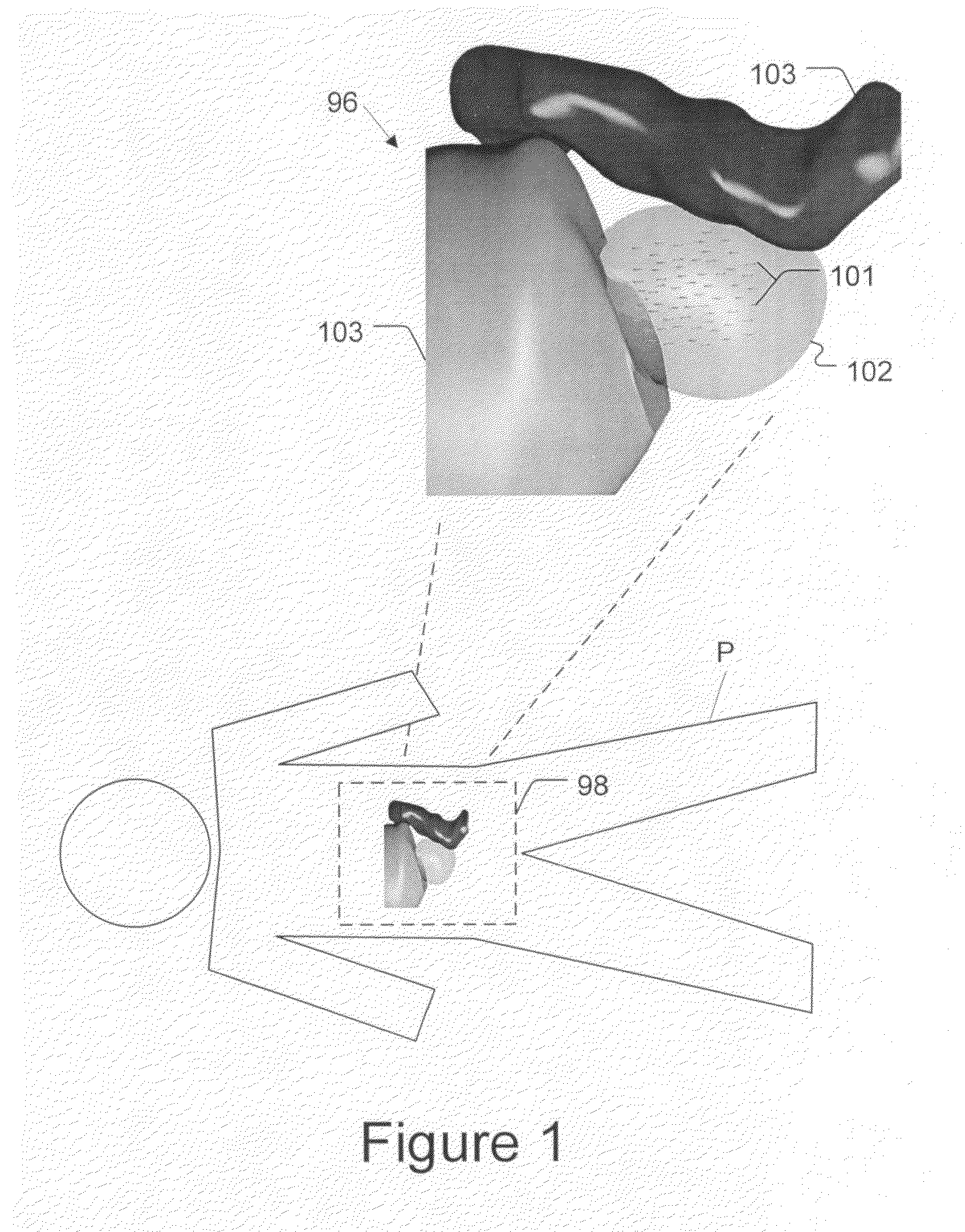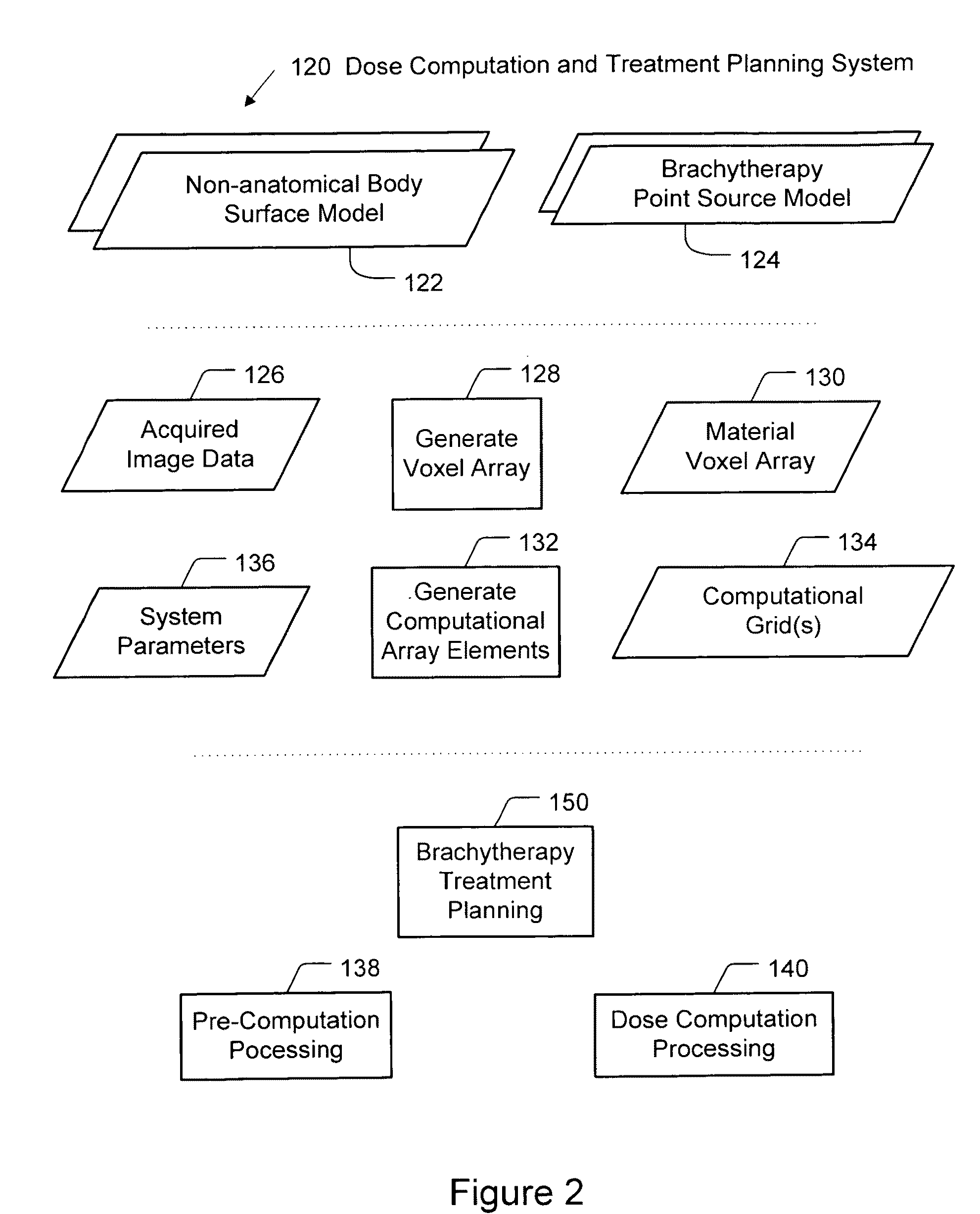Brachytherapy dose computation system and method
a radiation therapy and dose computation technology, applied in the field of system and method for planning radiotherapy treatments, can solve the problems of reducing the ability to repair sub-lethal damage compared to most healthy differentiated cells, damaging the dna of cells,
- Summary
- Abstract
- Description
- Claims
- Application Information
AI Technical Summary
Benefits of technology
Problems solved by technology
Method used
Image
Examples
Embodiment Construction
[0027]In the following description, for purposes of explanation and not limitation, specific details are set forth in order to provide a thorough understanding of the present invention. However, it will be apparent to one skilled in the art that the present invention may be practiced in other embodiments that depart from these specific details.
[0028]FIG. 1 shows a patient P undergoing brachytherapy, in which localized radiation sources 101 are placed inside, or in close proximity to a target volume 102 (e.g., tumor, malignant cells, other pathological tissue). Ideally, the sources 101 are arranged to maximize dose to the target volume 102, while minimizing dose to neighboring regions, such as critical structures 103. For purposes of description, the following terminology is used herein. The imaged area 96 corresponds to the volume within the patient P from which image data is acquired. The treatment area 98, also referred to herein as a treatment volume, corresponds to the volume wi...
PUM
 Login to View More
Login to View More Abstract
Description
Claims
Application Information
 Login to View More
Login to View More - R&D
- Intellectual Property
- Life Sciences
- Materials
- Tech Scout
- Unparalleled Data Quality
- Higher Quality Content
- 60% Fewer Hallucinations
Browse by: Latest US Patents, China's latest patents, Technical Efficacy Thesaurus, Application Domain, Technology Topic, Popular Technical Reports.
© 2025 PatSnap. All rights reserved.Legal|Privacy policy|Modern Slavery Act Transparency Statement|Sitemap|About US| Contact US: help@patsnap.com



